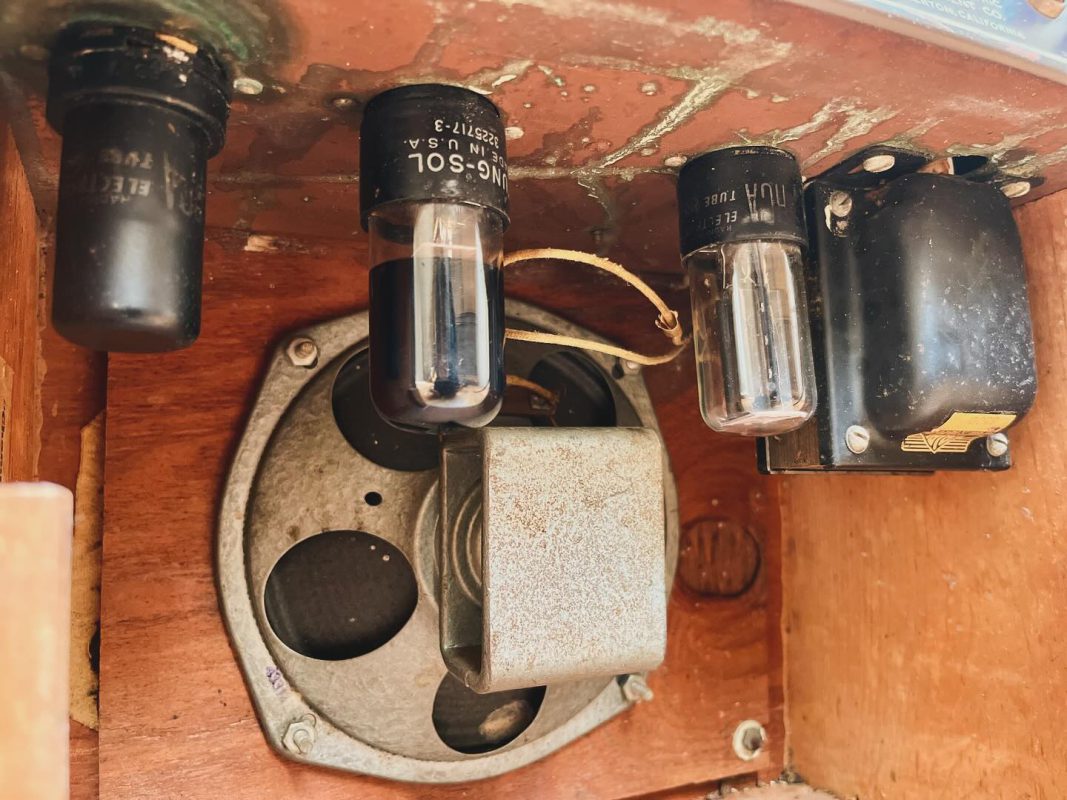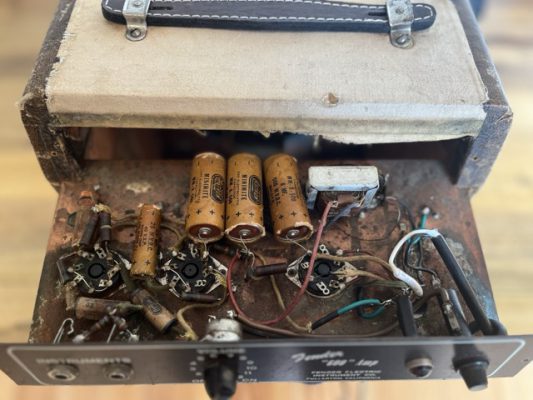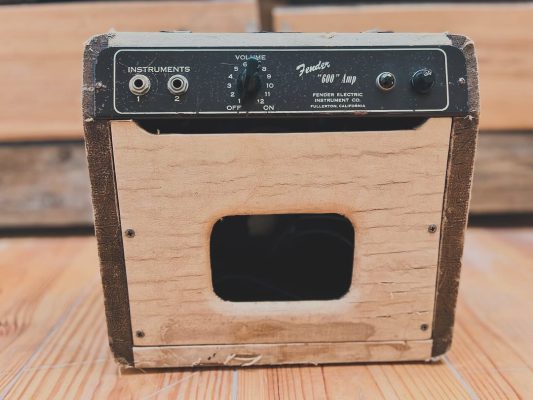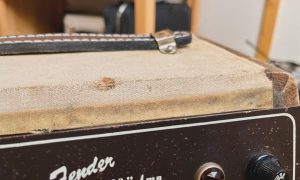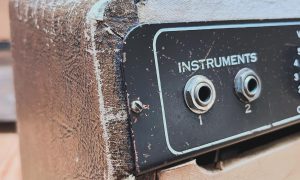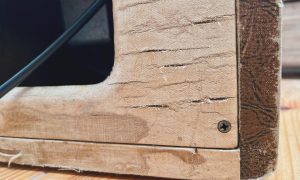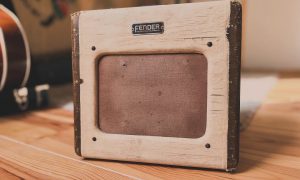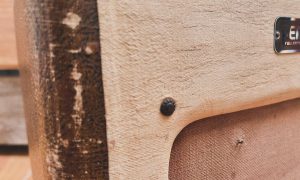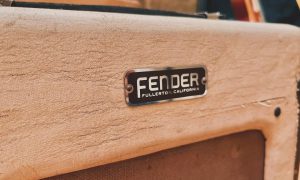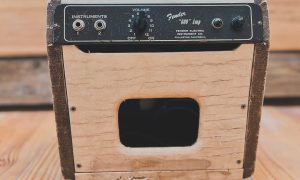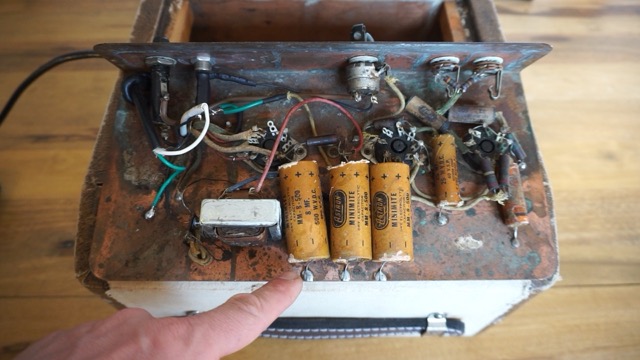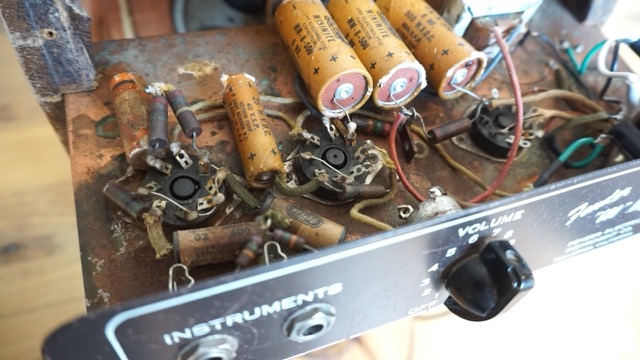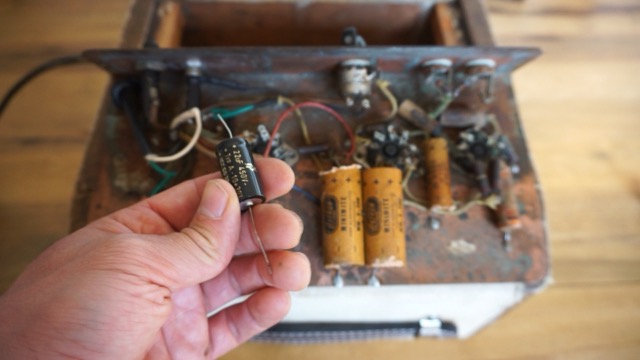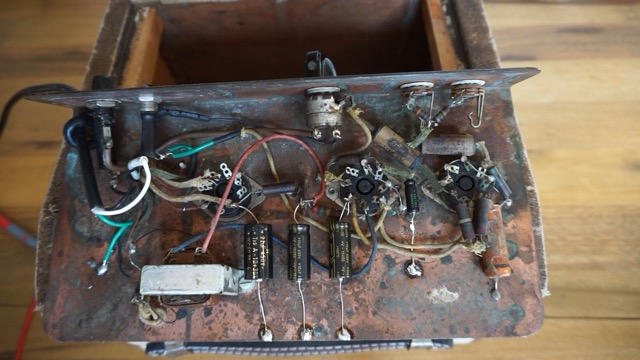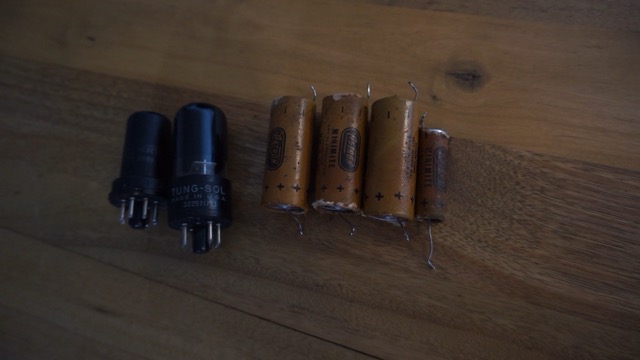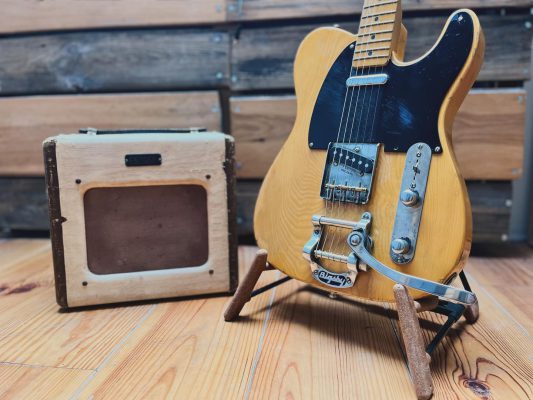This Fancy
Fender 600 Amp
From 1952 Rocks!
Look what we have here! A 1952 Fender 600 amp, or Champion 600, so the tube chart states. Fancy! The infamous Champion 600 amp that was reissued borrowes it’s esthetics from this one. And that’s as far as the reissue-ing went as the interior is obviously not a point to point design, but a pcb design with the circuit of a 60s/70s champ but with a fixed eq setting and a solid state rectifier.
It looks kind of messy but once you understand the circuit it couldn’t be more simple. With a big complex amp this would be different but this design suits it because of the limited nr. of components. And check it out, the 6v filament wiring has just 1 phase as the other one is provided by the chassis. Fancy!
So THIS is perhaps Fender’s tube amp design nr. 2 /3? Amazing how the sound – even in this current technical shape – coming from this ancient thing feels perfectly tuned and balanced to the ear. What the hell did we try to improve over the 7 decades after this?
Now, before we go drooling further all over the historic and very much expired electronic components, let’s take a close look at this little cabinet. It’s Fancy!
The Exterior
Tubes
Inside the back of the amp it’s what you hope to find. An original RCA 6SJ7, a vintage late 50s Tung-Sol and an RCA 5Y3GT Rectifier. The RCA’s may even be original.
They are probably still good too, but I did end up replacing them with NOS. My intensions are to use this amp and I rather keep these old tubes the way they are now. Original speaker, original TRIAD power transformer. The good stuff.erial 3506. That’s probably right in the middle of 1952, which means we have a 5B1 circuit
Interior & Work

